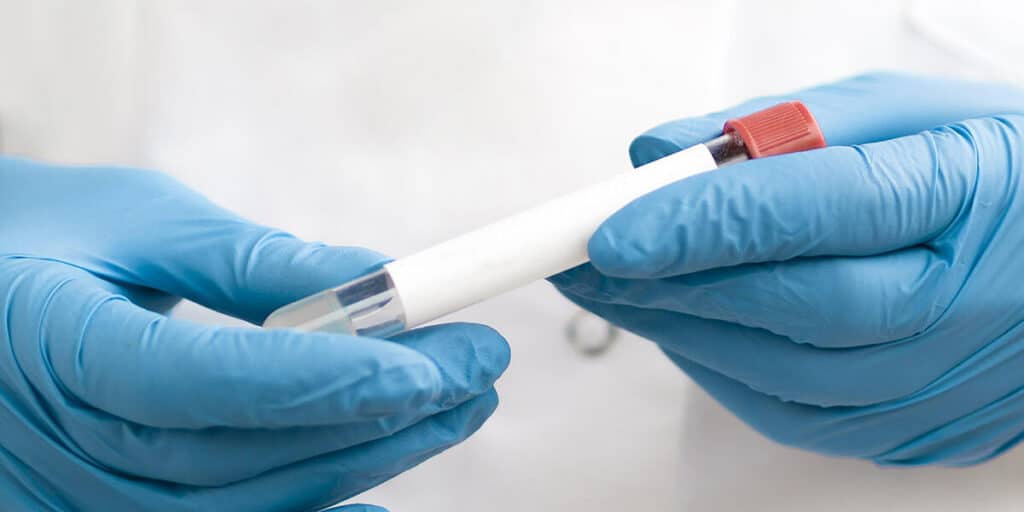The Relationship Between Mental Health and STDs: Understanding the Connection
The connection between mental health and sexually transmitted diseases (STDs) is multifaceted, with each affecting

Chlamydia is an STI that can affect your health and fertility without treatment. Since many chlamydia infections are asymptomatic, it’s easy to transmit the disease without knowing it.
Testing for chlamydia is surprisingly simple, and you can either get it done at your healthcare provider or with an at-home test kit, but in both instances, you’ll need to send your sample to a lab. The most common chlamydia test requires you to provide a urine sample. Your healthcare provider may take a fluid swab from the location of the infection to run a more sensitive test in a pathology lab.
If you have never gotten an STD test before, you might not know what to expect. In this guide, you can learn everything you need to know about chlamydia testing.
You probably know that chlamydia is a sexually transmitted infection, but you might not know what it actually is or how to get tested.
Chlamydia is a disease caused by a bacterium called Chlamydia trachomatis, often spread by sexual contact. It infects the epithelial cells of your genitals but can even infect cells in your lungs and eyes, causing asthma and conjunctivitis.
According to the Centers for Disease Control and Prevention, approximately 1 in 20 sexually active women between the ages of 14 and 24 has chlamydia. It’s the most commonly reported bacterial STI in the United States, and estimates suggest the United States has approximately 1.5 million new cases per year.
What makes chlamydia uniquely dangerous is that it attacks the reproductive system of men and women. In women, it can spread to the fallopian tubes and uterus, where it causes pelvic inflammatory disease, resulting in chronic pelvic pain, infertility, and potentially fatal ectopic pregnancies. Pregnant people can even transmit chlamydia to their children during childbirth, which may cause pneumonia or conjunctivitis in the newborn baby.
Chlamydia infections in men tend to be less severe, but untreated chlamydia can cause swelling in the tubes that carry sperm from the testicles, affecting fertility.
The most common reason to get a chlamydia test is that your partner tested positive and informed you. If you suspect you have the symptoms of an STI, you can take a 10-panel STD test that includes chlamydia testing. Five common chlamydia symptoms include:
The biggest problem with waiting to see symptoms is that, in many cases, chlamydia infections are asymptomatic, and you can transmit the disease to your partner without either of you knowing it. Pre-emptive screening is a good option if you have any of the following risk factors:
In general, most screening guidelines recommend that women get tested periodically, while men only need to test if they fall into one of the risk groups discussed above.
Getting an STD test can be an intimidating experience, but understanding what the process entails can make it feel a bit less scary.
Chlamydia testing is so important because the majority of chlamydia infections are asymptomatic, meaning sexually active persons can’t tell if they have the disease or not. There are no risks to taking a chlamydia and gonorrhea panel, but many risks to leaving an infection untreated.
The most common test for chlamydia is the Nucleic Acid Amplification Test (NAAT). This chlamydia test looks for bacterial DNA in the sample you provide. It does this by amplifying the DNA found in the sample, looking specifically for sequences that belong to chlamydia.
Another option is to try and grow chlamydia cells in the lab from your sample. This test is less common because it takes longer than the NAAT to produce results. Since early treatment is essential in protecting you and your partner from the health consequences of a chlamydia infection, the NAAT is the preferred testing method used by most STD-testing labs, like Rapid STD Testing.
With a rapid STD test, you can have your results within a few hours. If your healthcare provider sent the NAAT sample off to a lab, you may have to wait 24 to 4 hours to get your results. If you test positive, your doctor will prescribe medication to combat the infection and give advice on how to prevent spreading the disease to your sexual partners.
If you know you’re getting a chlamydia test in the near future, you can prepare by taking a few simple precautions. These include:
The actual process of getting a chlamydia test is straightforward regardless of whether you’re using an at-home kit or have a scheduled doctor’s appointment.
Most tests use urine samples. You should receive a sterile sample cup that you need to urinate into. Make sure to collect the urine stream as soon as it starts coming out — this first stream may “flush” bacteria away, so if you collect after the first stream, you may not collect enough bacteria for a positive test.
Your provider may also choose to take a sample of fluid from another area, such as your genitals or anus. They will gather this sample using a direct sample technique with a cotton swab on the affected area. The main difference in chlamydia tests for men and women is that the doctor will take the sample from the cervix in women and the urethra in men.
As chlamydia can cause eye infections, your healthcare provider may even take a sample of fluid from your eye. Generally, direct samples are more uncomfortable than collecting a sample of urine, but this discomfort is temporary.
After you or your healthcare provider have collected the sample, it goes off to a testing lab. This lab will perform the necessary tests and contact you or your provider with your results. If the result is positive, you and your provider need to discuss treatment options to get rid of the disease.
A chlamydia diagnosis can be distressing, but the good news is that most common antibiotics work in killing off the bacteria that cause the disease. For most people, simply taking the medicine as directed by their healthcare provider is enough to get rid of the STI and resume a normal sex life. Be sure to take every dose of your medication as prescribed. Failing to complete the course of antibiotics can cause the infection to come back, even if you don’t have symptoms.
During treatment, it’s important to listen to your doctor’s instructions. You can also take precautions to reduce the spread of chlamydia to others by:
One of the main questions doctors get asked by their patients is whether it is safe to have sex during their chlamydia treatment, and the answer is no. In general, it’s a bad idea to have sex while undergoing treatment for any STI, particularly one that has such negative health implications as chlamydia.
Be honest with your sexual partner or partners about your diagnosis, and refrain from sexual contact that could spread the infection. Your partner should also get tested as a precaution.
Luckily the most common treatment for chlamydia is a seven-day course of antibiotics, so you just need to wait seven days before resuming your love life.
Being responsible about your sexual health protects you and your partners from sexually transmitted diseases. One of the best ways to keep yourself safe is regular testing using either at-home testing kits from Rapid STD Testing or visiting your local healthcare provider. It’s always better to know your health status and treat any STIs quickly than ignoring them and making yourself and your partners sick.
So whether you’re with a new partner or just want some peace of mind, take charge of your health and order a chlamydia test at a Rapid STD Testing clinic near you today!

No embarrassing exams, long waiting lines, or multiple visits. Just a quick lab visit for fast results.
Discover a lifestyle-focused approach to quality content at RapidSTDtesting.com. Unlike others, we don't rely on gimmicks or fabricated data to lure visitors. Our commitment goes beyond clicks – we're dedicated to answering the questions you search for online. With a team comprising medical experts and content specialists, our articles are meticulously crafted to promote STD testing, educate, and dismantle social stigmas.
Embrace a confidential atmosphere with our private testing options, ensuring your privacy is paramount. Every article is meticulously fact-checked and approved by medical advisors, guaranteeing accuracy and reliability. Our team, comprised of doctors and medical professionals, ensures that each piece of content serves a purpose – to inform, educate, and promote awareness.
Join us as we bridge the gap between medical expertise and lifestyle choices. RapidSTDtesting.com is your trusted source for informative, medically vetted content.